A Definitive Guide to Gym Ball Holders
Gym balls come in many types & sizes. They require proper storage solutions like gym ball holders. Unlike other equipment, balls cannot be kept in a corner.
They will simply roll back onto the gym floor & be an injury hazard. In a busy commercial gym, keeping things organized & accessible is a must.
It prevents cluttering the gym floor, thus opening up precious space. This article is your ultimate guide to all the information about gym ball holders.
Let’s start,
Table of Contents
- 1. Gym Ball Holders
- 2. Types of Gym Ball Holders
- 3. Free-standing versus Wall-mounted Gym Ball Holders
- 4. Construction of Gym Ball Holders
- 5. Assembling a Gym Ball Holder
- 6. Portability
- 7. Adjustable Gym Ball Holders
- 8. Expandable Gym Ball Holders
- 9. Making Alterations to a Gym Ball Holder
- 10. Maintenance of Gym Ball Holders
- 11. Buyer’s Guide
- 12. Conclusion
1. Gym Ball Holders
At any given time, commercial gyms stock various types of gym balls. All of which are of different shapes, sizes, & functions.
Like, yoga balls, wall balls, balance balls, exercise balls, etc.
Gym ball racks have more importance compared to other forms of gym storage. Without them, it is close to impossible to store & organize all these exercise balls.
Good quality & sturdy gym ball storage racks are an asset to any gym setup.
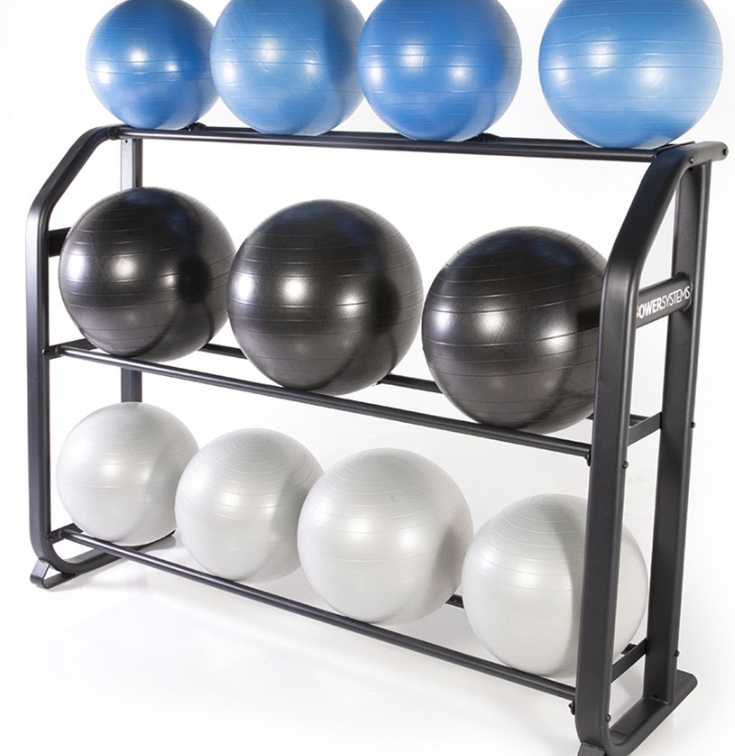
Figure 1 – A gym ball holder
2. Types of Gym Ball Holders
The commonly available types of gym ball holders are:
- Floor or free-standing gym ball holders
- Horizontal storage or shelving units
- Vertical storage or loops
- Wall-mounted gym ball holders
- Single ball holders
- Multiple ball holders
- Gym ball storage trees
- Stability ball holders
- Ball chairs
- Bosu ball holders
- Wall-mounted
- Portable
- Balance ball base storage
- Multi-purpose gym storage racks
As you can see, there are many types of gym ball storage available. Some are specific to a certain type & size of a gym ball. Others can store different types & sizes.
2.1 Free-standing Gym Ball Holders
Free-standing gym ball holders require floor space. They can either be propped against the wall or used as partitions for dividing the gym floor.
These can be horizontal or vertical.
Horizontal Storage Units
These look similar to horizontal shelving units. Gym balls can be stored in a row side by side. The storage capacity is high. A single shelf stores many gym balls at once.
This type of gym ball storage rack is double-sided. Thus, making it easy to access the ball from either side.
The racks have wheels at the base to make them easily portable.
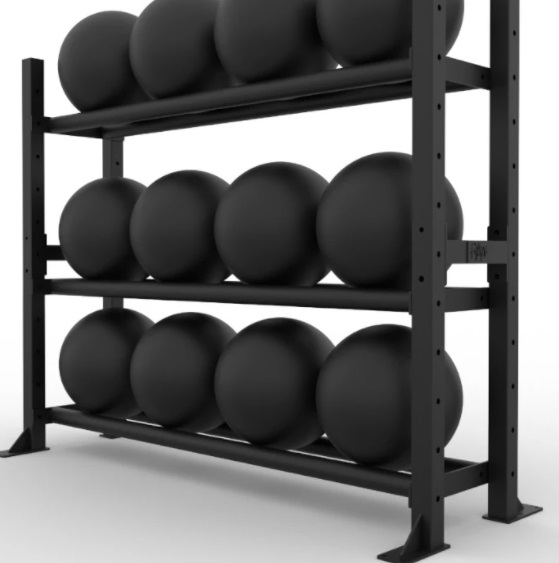
Figure 2 – Horizontal gym ball holder unit
Vertical Storage Units
Vertical gym ball storage racks have loops or half-loops arranged on top of each other. Each tier holds a single gym ball.
The storage loops can be in a straight line, branching, or triangular.
Vertical gym ball storage racks are compact. They have a small footprint. They can be stored in a corner without using much floor space.
Vertical storage units can accommodate five or more gym balls at once.
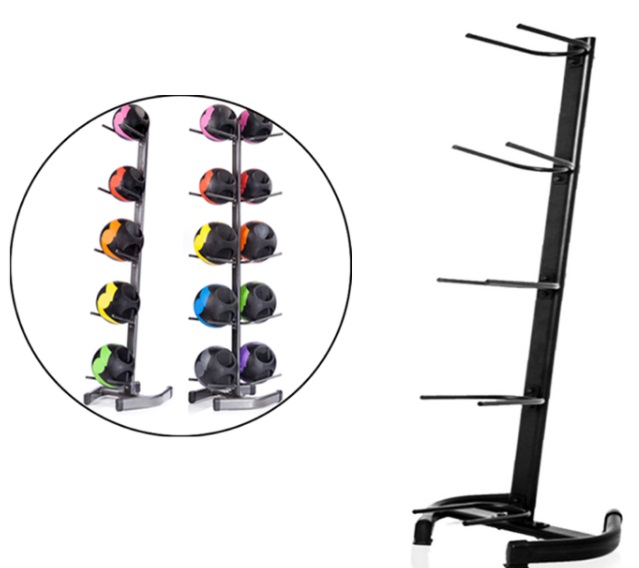
Figure 3 – A vertical gym ball holder unit
2.2 Wall-mounted Gym Ball Holders
Wall-mounted ball holders use no floor space at all. It makes them more compact as compared to the free-standing storage units.
These can be horizontal or vertical, depending on the wall space available.
They can be further divided into two types:
Single Ball Holders
A single, wall-mounted holder is similar to a basketball hoop. The holder has to be secured to the wall by screws.
These are more suitable for large size gym balls as they can be neatly stored away. The storage is limited to a single gym ball of a specific size.
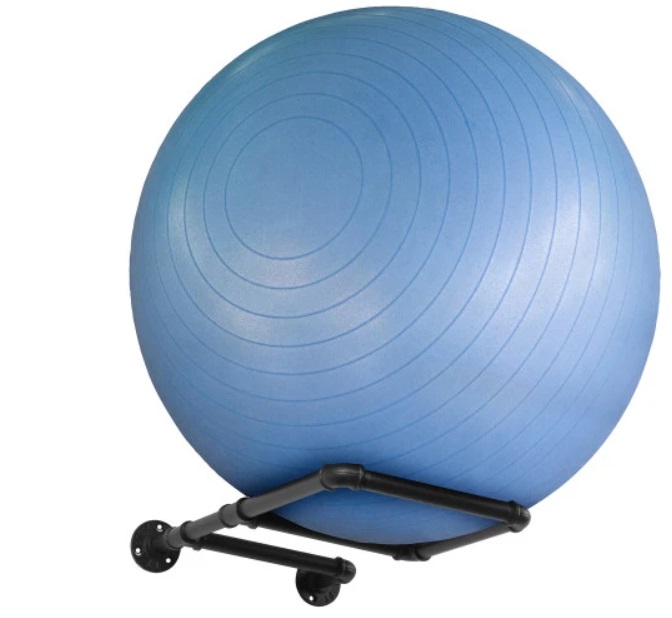
Figure 4 – Wall-mount single ball holder
Multi-ball Holders
As the name suggests, this type of wall-mounted storage can accommodate more than one gym ball.
The number can be anywhere from two balls to four or above.
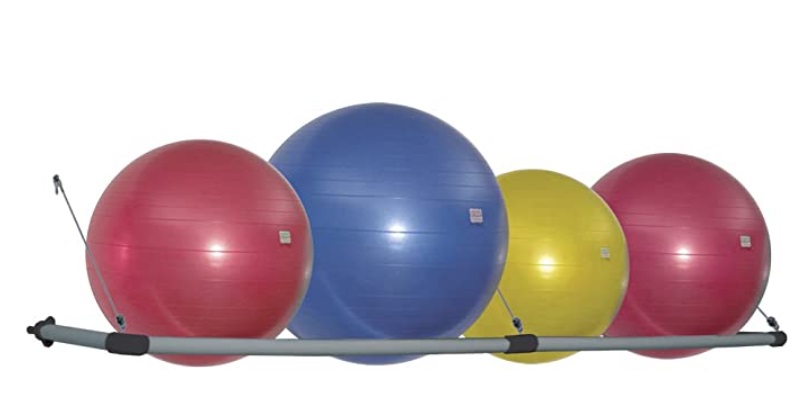
Figure 5 – Wall-mount multi ball holder
2.3 Gym Ball Storage Trees
Gym ball trees fulfill two requirements.
- Display
- Storage
They are usually used to store Swiss balls though they can accommodate other types of gym balls too.
If you want to utilize limited floor space, then gym ball storage trees are the way to go. They have branching arms with loops at the ends.
Each loop or ring can store a single gym ball.
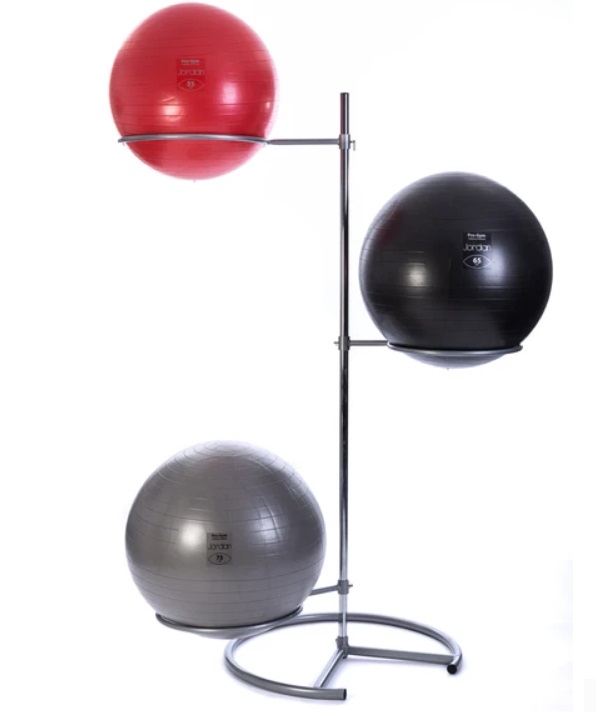
Fig 6 – A gym ball storage tree holder
2.4 Inflatable Gym Ball Holders
These are circular gym ball holders. A pump is used to inflate them.
They serve two purposes:
- To keep gym balls from rolling when stored
- To keep gym balls from sliding when in use
They fit most exercise balls. Inflatable gym ball holders are the best choice for yoga & balance balls.
2.5 Gym Ball Storage Stackers
You are looking for a storage solution for your yoga, stability, or balance balls & you don’t want to buy a whole rack.
You should invest in gym ball storage stackers.
These are made of pliable PVC & have Velcro closures. It allows you to adjust the size of the ring according to your gym ball.
You can use just one ring to act as a base for your yoga ball. If you want to store multiple balls, use the stackers to stack the balls vertically.
One set usually includes three stackers.
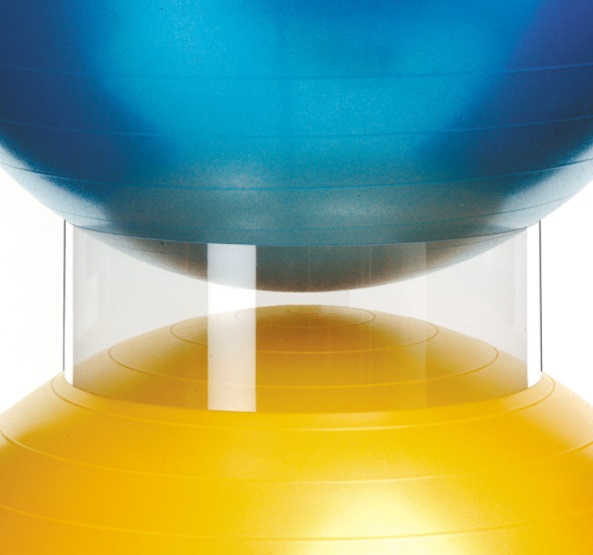
Figure 8 – Gym ball stacker ring
2.6 Bosu Ball Holders
Bosu balls are a type of yoga ball. They are half-domed in shape. Due to their unique shape, it is difficult to store them on conventional storage racks.
For safe storage, Bosu balls have to be stacked base to base or dome to dome.
You can buy special racks or carts specific to Bosu balls. These are used to store the balls according to the manufacturer’s guidelines.
Bosu ball holders are available in free-standing or wall-mounted versions.
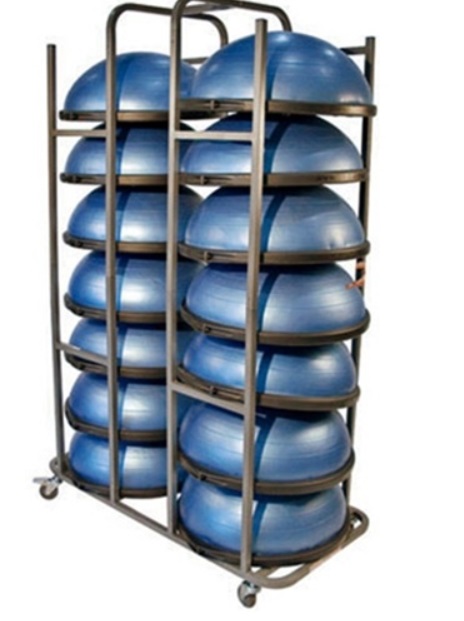
Figure 9 – A Bosu ball storage holder
2.7 Balance Ball Base & Ball Chairs
A balance ball base & ball chair both perform a similar function. They keep the ball from slipping & sliding when it is in use.
They come in handy when you are using your balance ball as a chair for your work desk. Both can double as a storage ring for the balance balls as well.
These are easy to use & portable. Both require little to no assembly.
2.8 Multipurpose Gym Storage Racks
These racks are not specifically for gym ball storage. They store all kinds of gym accessories, like dumbbells, barbells, kettlebells, etc.
The top shelf on the rack is for gym balls usually.
If you have a few gym balls to store & you don’t want to commit to a separate gym ball holder. A multipurpose gym storage rack is your next best choice.
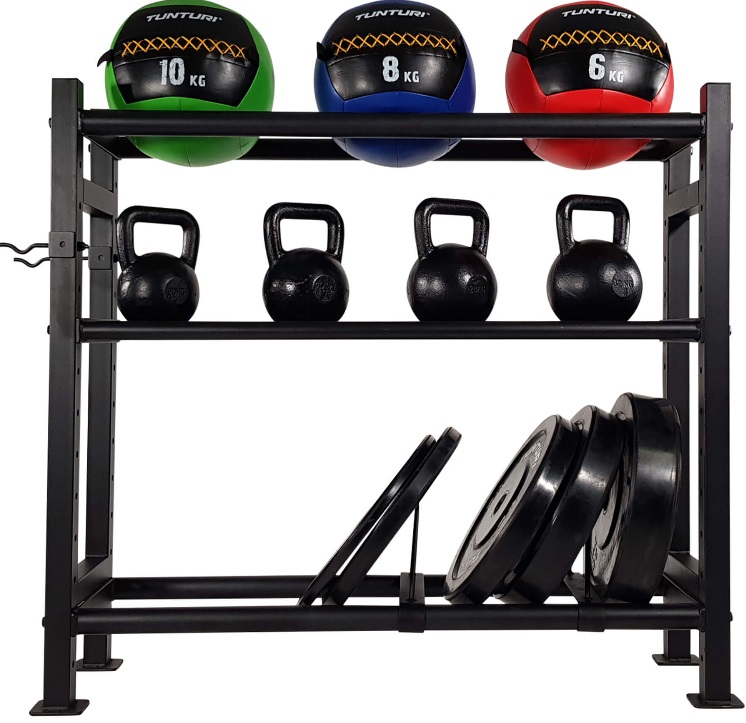
Figure 12 – Multipurpose gym storage rack
3. Free-standing versus Wall-mounted Gym Ball Holders
Should you choose a free-standing ball storage rack or splurge on the wall-mounted ones? It is an important question to consider.
Below are some things to keep in mind about both types of gym ball holders before making your decision:
| Free-standing Gym Ball Holders | Wall-mounted Gym Ball Holders |
| Require floor space Fixed storage Portable (wheels) It is used all over the gym Also used to partition a space Higher storage capacity | Wall-mounted Maybe expandable Bolted to the wall Accessed only at the wall Not used to partition a space Less storage capacity comparatively |
It all comes down to your preference & the floor plan. Commercial gyms with an open floor plan & not too many walls will benefit from free-standing racks.
On the other hand, a place with limited floor space will be better suited to wall-mounted holders.
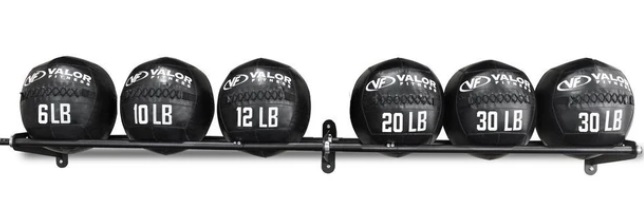
Figure 13 – Wall-mount gym ball holder
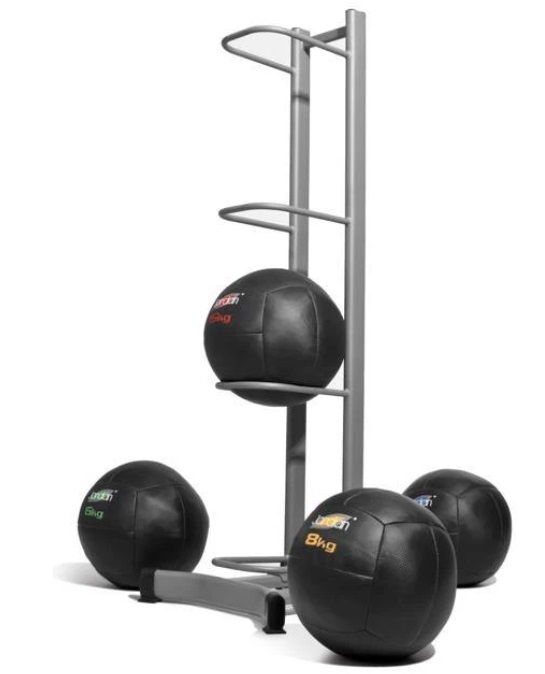
Figure 14 – Standing gym ball holder
4. Construction of Gym Ball Holders
The construction of a gym ball holder is very important. It directly relates to the weight capacity, durability, & sturdiness of the rack.
Many different materials are used to make gym ball holders. Some of which are:
- PVC or Polyvinyl chloride tubing
- Stainless steel
- Industrial metal pipes
- Aluminum
Ball holders made of PVC tubing or aluminum have a lighter weight capacity. They are less durable than metal or steel gym ball holders.
They are used to store lighter gym balls.
By far, the more long-lasting gym ball holders have a reinforced, stainless steel or metal construction. The frame is powder-coated to make it scratch-resistant & sweat-proof.
Steel gym ball holders also have a higher weight & storage capacity comparatively.
5. Assembling a Gym Ball Holder
Assembling a gym ball holder is a simple & straightforward affair. Most don’t need any assembling at all.
They are delivered to you fully assembled. All you have to do is, either bolt it to the wall or use it straight away.
Examples include inflatable ball rings, ball chairs, individual wall-mounted loops, etc.
Holders like free-standing racks & larger, wall-mounted ones do need some assembly though. The good news is that it is very minimal & mostly a one-person job.
Having said that, another set of hands may come in handy for larger wall-mount ball holders. It will certainly make the process much safer.
All the gym ball holders come with a detailed & easy-to-understand instructional manual.
All parts are clearly labeled as well.
6. Portability
Portable gym equipment is an advantage when you are low on space. You can move it to the side or store it away when not in use.
Most free-standing gym ball holders have wheels. Wheels make it easy to move from one place to another.
Single ball holders like ball bases, rings, or ball chairs, are lightweight & don’t require specific parts to make them portable.
Just pick them up & put them wherever you want to.
The wall-mounted ball holders are immovable, though. Once bolted to the wall, they become fixed in one place.
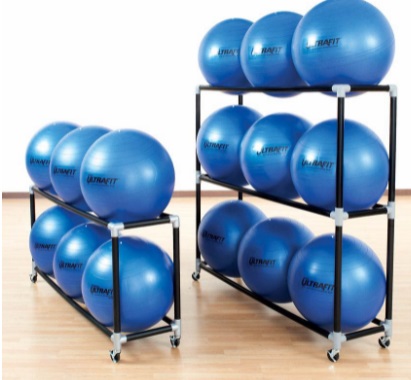
Figure 15 – Gym ball holders with wheels
7. Adjustable Gym Ball Holders
Both adjustable & fixed gym ball holders are available for sale.
These racks are made adjustable in different ways. Some have movable loops to accommodate various ball sizes.
Others have adjustable support poles to perform the same function. Gym ball stackers have Velcro closures to increase or decrease the size of the ring.
Both versions perform the same function. Choosing one over the other is a matter of personal preference.
If you want your gym ball holders to be adaptable to various ball sizes, choose an adjustable one. Otherwise, a fixed rack will also get the job done.
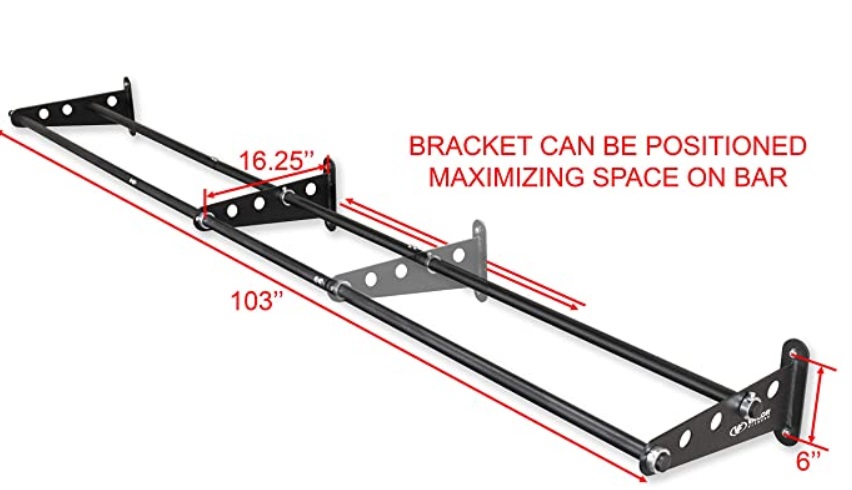
Figure 16 – An adjustable gym ball holder
8. Expandable Gym Ball Holders
Again, the answer to this question is that some are expandable while others aren’t.
Free-standing racks have welded frames for the most part. It makes them fixed & there is no way to add an extension. Some of the racks have holes in the pillars of the frame to add extra shelving. (Which, of course, you will have to buy separately)
Wall-mount gym ball holders are expandable in most cases. There is the option to buy extra pieces to add to the original rack to increase its size.
9. Making Alterations to a Gym Ball Holder
It is never a good idea to make alterations to a gym ball holder.
Commercial gym ball holders are made according to set specifications. Whether PVC or metal, altering it in any way will decrease its structural integrity.
These racks hold many gym balls at once. Alterations performed against the manufacturer’s guidelines will cause damage to it.
There is a chance of injury to the users as well.
Instead, look for adjustable or expandable gym ball holders. Ask the manufacturer about options to upgrade your pre-existing racks.
10. Maintenance of Gym Ball Holders
Like any piece of gym equipment, ball holders also need proper maintenance. It will increase their durability & make them long-lasting.
Here are five ways you can extend the life of your commercial gym ball racks:
- Avoid exceeding the weight capacity: Overloading your gym ball holder will cause wear & tear. It can also bend PVC holders, causing them to lose shape.
- Clean your racks: This is a no-brainer. Clean your gym ball holder regularly. It will prevent the buildup of dust, rust, & sweat.
- Lubricate: Lubricating adjustable parts & wheels of your gym ball holder will keep it mobile. It will also prevent unnecessary damage to these parts.
- Follow the guidelines: Always read the manufacturer’s guidelines. It will help you properly care for your gym equipment.
- Don’t misuse: Avoid storing different-sized gym balls on a rack specific to a single type. It will not only prolong the life of your ball holders; it will also prevent breakage.
11. Buyer’s Guide
Here are some things to consider if you are looking to place a wholesale order for gym ball holders:
- Construction
- Finish
- Space-saving
- Weight load
- Versatility
11.1 Construction
There are all types of gym ball holders available in the market. Always consider buying one with good quality construction.
High-gauge stainless steel holders are sturdier than the rest. They will last longer & are resistant to wear & tear.
11.2 Finish
The finish of the frame is as important as the material used in its construction. A chrome or powder-coated finish is resistant to most pollutants.
It will make the gym ball holder scratch & sweat-resistant.
11.3 Space-saving
The main reason for getting a gym ball rack is to save on space. Stay well away from bulky & poorly designed holders.
Choose a holder that will be compact, space-saving, & a good organizer for your gym balls.
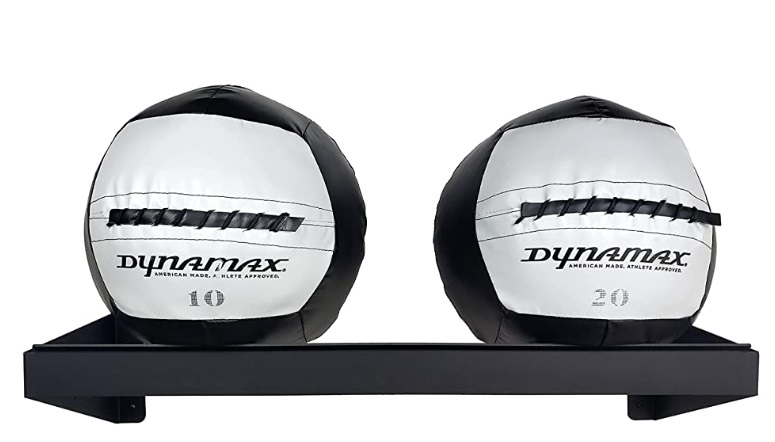
Figure 17 – A dual gym ball holder
11.4 Weight Load
Weight load is a practical consideration you should keep in mind. Ball holders with a weight capacity of 250 lbs & above will accommodate different sizes of gym balls.
It won’t get damaged quickly either. Thus, saving you money in the long run.
11.5 Versatility
This consideration extends to all gym equipment. Get the best option your money can buy. Look for products with additional features so you can get the best in the market.
Features like (adjustability, wheels, extendable parts, etc.) are always an added benefit.
12. Conclusion
Gym ball holders have many versions. Knowing what to buy & where to buy it from is the real skill.
This article aims to answer these questions for you. You will be able to make an informed choice after reading it.
Choose a trusted manufacturer like Yanre Fitness to order your gym ball holders.
And ask for a quote today!






